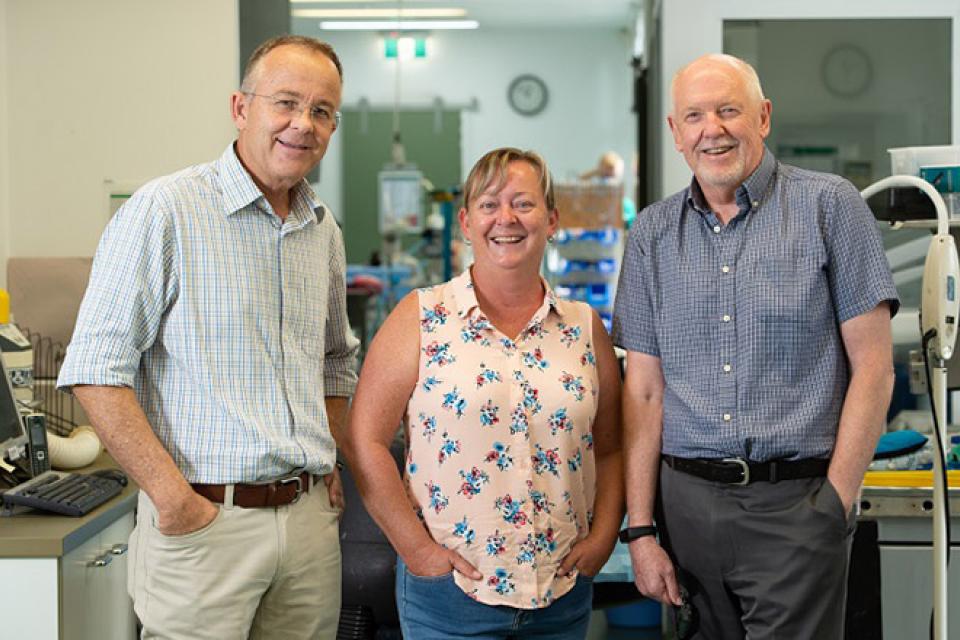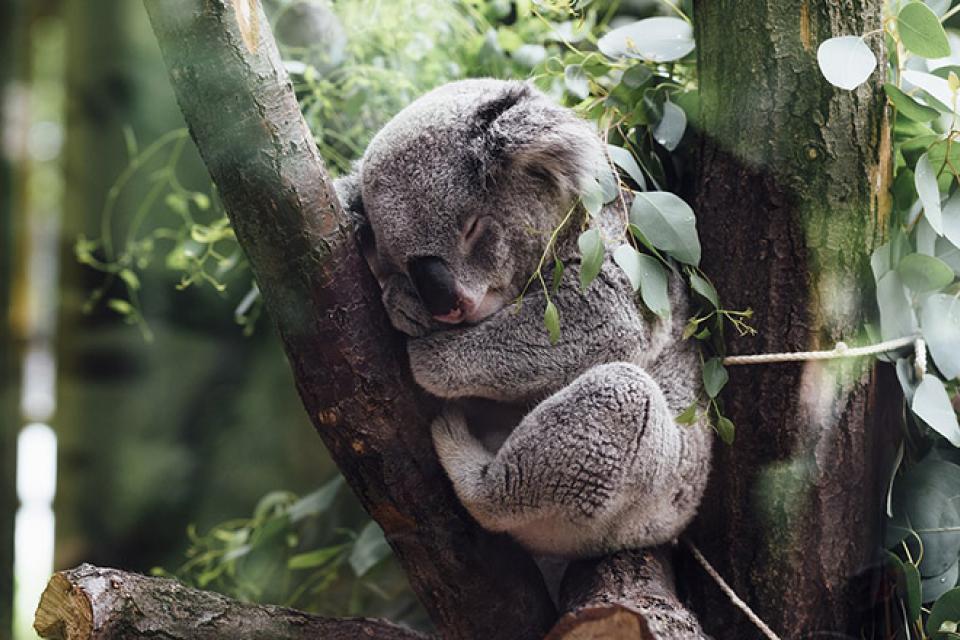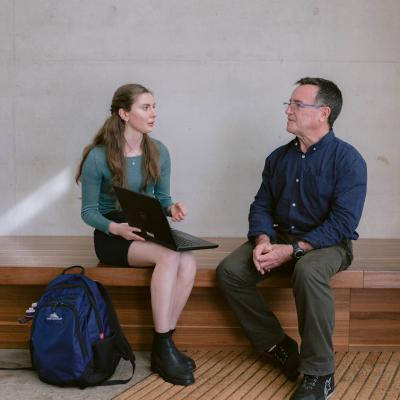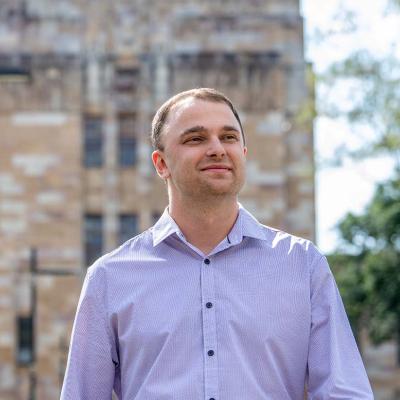Want to protect wildlife and help it thrive? Make an impact with a wildlife science career.
Australia’s precious wildlife is under pressure more than ever before. Many of Australia’s iconic species are facing threats from:
- land clearing
- climate change
- altered fire regimes
- invasive pests.
The wildlife-human interface is also becoming critically important in the management of agricultural and urban landscapes and threats from zoonotic diseases.
Researchers at The University of Queensland are on the frontline of wildlife management – both in the field and captive management. Every day, our students and scientists are working to protect species on an individual and population level. They’re involved in hands-on conservation projects such as:
- saving koalas from chlamydia outbreaks
- creating safe havens for bilbies
- better understanding the breeding behaviours of wombats.
And that’s just a snapshot of the amazing things people are doing with their wildlife science careers.
Incredible hands-on experiences
Hands-on learning is at the heart of UQ’s wildlife programs. In the Bachelor of Wildlife Science, you’ll have the opportunity to work closely with animals to better understand their behaviour, handling and wellbeing. Find out how ecology weaves into the successes and challenges of species protection. Learn how critical factors like diet, animal husbandry and habitat intervention can improve the future of threatened species.
UQ’s wildlife centre, the Hidden Vale Wildlife Centre, was created to develop innovative and globally significant solutions for wildlife management and conservation. The centre is a cutting-edge teaching, research and community engagement facility located on the property of Old Hidden Vale at Grandchester in South East Queensland. The facilities and resources here include:
- interpretation and engagement spaces
- veterinary clinic
- lecture theatre
- office spaces
- a vast range of equipment
- unique wildlife housing and breeding facilities
- research areas equipped with state-of-the-art technology.
The facility houses a diverse range of native wildlife including both common and threatened species, and researchers have access to over 10,000 hectares of real-world research-focused land across multiple properties. This exceptional fusion of land, facilities, resources and partnerships uniquely supports innovation and applied research, critically including valuable long-term research.
As a wildlife student, you’ll also have access to the UQ Native Wildlife Teaching and Research Facility, which actively supports teaching and research in native wildlife and contributes to the conservation of Australian ecosystems.
This unique facility allows you to participate in captive breeding programs for two critically endangered species: the bridled nailtail wallaby and the mahogany glider. For teaching and research purposes, it also maintains colonies of fat-tailed dunnarts, eastern blue-tongue lizards and central bearded dragons, and it houses a black-headed python.
Field work that makes a difference
Hoping to do impactful research out in the world? Consider completing a Master of Animal Science or a Doctor of Philosophy (PhD) program.
UQ PhD candidate Cassandra Arkinstall has been working with the Save the Bilby Fund to secure the future of the bilby, one of Australia’s most threatened species. Through her research and studies, Cassandra has had the opportunity to help introduce bilbies from captive breeding facilities at Charleville to a predator-proof reserve at Currawinya National Park, 1000 kilometres west of Brisbane.

“I’m able to monitor the health and movements of the bilbies as part of my PhD research, using small, specialised tracking devices attached to their tails,” says Cassandra.
“Bilbies are nocturnal, solitary animals, and in the past they’ve proven difficult to track in the wild, so there’s still a lot to learn about their behaviour.”
The miniaturised GPS tracking units record movement pathways, enabling her to assess home ranges and the location of burrows. The small, ground-dwelling marsupial once inhabited 70% of the continent, but it now faces an uncertain future due to introduced predators and habitat change. With Cassandra’s efforts, the bilby may have a fighting chance.
Transferable skills for industry
UQ wildlife graduates pursue diverse wildlife science careers. Our programs allow you to pick up critical skills in:
- field monitoring
- data analysis and synthesis
- communication
- hypothesis modelling
- strategy
- project management.
Wildlife researcher and PhD candidate Lyndal Hulse pursued her passion for wildlife, which soon transformed into a deep understanding of medical diagnostics. Desperate to help koalas suffering from widespread chlamydia outbreaks, Lyndal worked with colleagues to develop a DNA test to rapidly detect the infection.

Lyndal Hulse (centre) developed a DNA test to quickly identify koalas with chlamydia alongside Associate Professor Stephen Johnston (left) and Professor Ken Beagley (right).
This test is now used in wildlife hospitals all over Australia. The technology, known as a LAMP (loop mediated isothermal amplification) test, is now helping track, trace and treat koala chlamydia infections, offering on-the-spot diagnostic results in as little as 30 minutes.
“Other testing can detect koala pathogens like Chlamydia pneumoniae and Bordetella bronchiseptica, which cause respiratory disease and pneumonia in koalas,” says Lyndal.
“In the future, these could be incorporated with the Chlamydia pecorum assay into a single test.”
“We’re ready to see koala treatment supercharged, so these beautiful animals can return to safe and healthy lives in the wild.”
Combined with a better understanding of koala genetics and captive breeding, UQ researchers are using this technology to make significant advances for the management of koalas in South East Queensland and throughout all of eastern Australia.

Wildlife skills for a challenging future
As human development expands, new skills and approaches to manage human-wildlife interactions are vital, both in urban and agricultural settings. In this field, you can work to protect animals in agricultural, urban and semi-urban environments while also minimising impacts on human environments. Help build win-win scenarios by learning cutting-edge solutions here at UQ.
While the human population expands, so do public health risks from zoonotic (animal-to-human) disease transfer. The COVID-19 pandemic has also made it clear that the human-wildlife interface can have significant public health impacts. In your wildlife science career, you can be at the forefront of this fast-expanding field. Discover how animal populations, biology and behaviours can result in disease transfer and how best to tackle these risks early on. Help build a safer world and potentially prevent the world’s next pandemic.
Learn more about the Bachelor of Wildlife Science or the Master of Animal Science.






